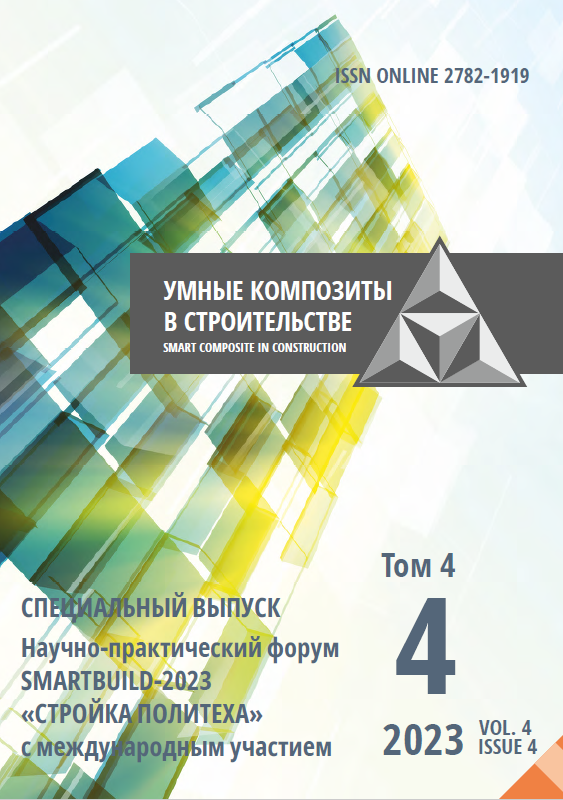National Research University Higher School of Economics
Yaroslavl State Technical University
Yaroslavl, Yaroslavl, Russian Federation
Yaroslavl, Yaroslavl, Russian Federation
Yaroslavl State Technical University (Kafedra «Tehnologiya stroitel'nogo proizvodstva»., Professor)
Yaroslavl, Yaroslavl, Russian Federation
539.61
Considerable energy resources are consumed in the production of building materials, during construction and installation works, for operation with current and major repairs, reconstruction, dismantling, utilisation and recycling. As a rule, these energy resources are non-renewable, therefore, for energy saving purposes, it is necessary to take into account the total energy consumption of capital construction facilities during their life cycle. The authors have proposed the structure of a relational database of building materials energy intensity to calculate energy costs. The proposed database contains a list of building materials and energy intensity values at all stages of the life cycle. The novelty of the database is the division of materials by building elements (replaceable, non-replaceable). The article presents fragments of energy intensity calculation of the apartment building life cycle in the Ivanovo city using the proposed database.
liquid – solid material surface, stress tensor, sitting drop, surface energy, internal pressure, liquid adhesion model
1. Roldugin, V.I. & Kharitonova, T.V. (2017) Action mechanism and place of capillary forces application, Colloid. J., 79(4), pp. 493-501 [online]. Available at: https://www.elibrary.ru/item.asp?id=29404302 (in Russian).
2. Rusanov, A.I. (2012) Colloid-chemical and optical properties of nanostructures, interfacial layers and porous bodies, Colloid. J., 74(2), pp. 148 (in Russian).
3. Durand, M. (2021) Mechanical approach to surface tension and capillary phenomena, Amer. J. Phys., 89, pp. 261-266.
4. Deryagin, B.V. (1986) Theory of colloids and thin films stability. M.: Nauka (in Russian).
5. Rawlinson, J. & Widom, B. (1986) Molecular theory of capillarity. M.: Mir (in Russian).
6. Frenkel, Ya.I. (1975) Kinetic theory of liquids. L.: Nauka (in Russian).
7. Kolesnikov, I.M. (1992) Thermodynamics of physical and chemical processes. Moscow: Akad. im. I.M. Gubkina (in Russian).
8. Melvin-Hughes, E.A. (1962) Physical Chemistry. Moscow: Izd-vo inostr. lit. (in Russian).
9. Kartsev, V.N., Shtykov, S.N., Pankin, K.E. & Batov, D.V. (2012) Molecular forces and internal pressure of liquids, J. Struct. Chem., 53(6), pp. 1113-1118 (in Russian).
10. Bakker, G. (1928) Kapillarität und Oberflächenspannung: Handbuch der Experimentalphysik. Leipzig: Akadem. Verlagsgesellschaft.
11. Harashima, A. (1958) Molecular Theory of Surface Tension, Advances in Chemical Physics, (1), New York: Yale University Press.
12. Malinin, N.N. (1975) Applied theory of plasticity and creep. M.: Mashinostroenie (in Russian).
13. Ababneh, A., Amirfazli, A. & Elliott, J.W. (2006) Effect of Gravity on the Macroscopic Advancing Contact Angle of Sessile Drops, Canad. J. Chem. Eng, 84, pp. 39-43.
14. Brutin, D., Zhu, Z.Q. & Rahli, O. (2009) Sessile Drop in Microgravity: Creation, Contact Angle and Interface, Micrograviti Sci. Technol., 21(1), pp. 107-114.
15. Abel, G., Ross, G.G. & Andrzejewski, L. (2004) Transformation of a disturbed sitting drop, Adv. Space Res., 33(8), pp. 1431-1438.
16. Kabov, O.A. & Zaitsev, D.V. (2013) Influence of wetting hysteresis on the drop spreading under the gravity effect, Dokl. Akadem. nauk, 451(1), pp. 37-40 (in Russian).
17. Ignatyev, A.A. & Gotovtsev, V.M. (2020) Transformation of gisturbed sittin drop, Smart Composite in Construction, 1(1), pp. 39-43 [online]. Available at: http://comincon.ru/index.php/tor/V1N1_2020 (accessed 10.10.2023) (in Russian).
18. Loytsyanskiy, L.G. (1978) Mechanics of fluid and gas: textbook. Moscow: Nauka (in Russian).
19. Kaplan, I.G. (1982) Introduction to the theory of intermolecular interactions. Moscow: Nauka (in Russian).
20. Rusanov, A.I. (1967) Phase equilibria and surface phenomena. L.: Khimiya (in Russian).
21. Verkholomov, V.K. (2017) Two Concepts While Determining Contact Angle Value, Modern Sci., (1), pp. 8-13.
22. Tovbin, Yu.K. (1990) Theory of physical and chemical processes at the gas-solid boundary. M.: Nauka (in Russian).
23. Ignatyev, A.A., Gotovtsev, V.M. & Razgovorov, P.B. (2021) Theoretical background for simulation of physical processes in the interfacial layer «solid-liquid», J. Phys.: Conf. Ser., (1889), pp. 022077. DOI:https://doi.org/10.1088/1742-6596/1889/2/022077.
24. Ignatyev, A.A., Gotovtsev, V.M. & Razgovorov, P.B. (2021) Theoretical background for simulation of the interfacial layer «liquid-gas», J. Phys.: Conf. Ser., (1889), pp. 022088. DOI:https://doi.org/10.1088/1742-6596/1889/2/022088.







